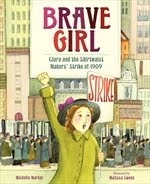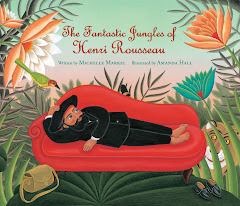
I met
Candace Ryan a few years ago at an SCBWI conference. She's an incredibly supportive and active member of the children's book community in Southern California. It's a pleasure for me to post this interview with Candace, in celebration of
Animal House, her debut picture book that arrived this month.
How does Animal House reflect Candace Ryan? Why were YOU the person to write this book?This is a really good question. I’ve always loved wordplay, humor, and animals. In the most basic sense, ANIMAL HOUSE is about the joining of these elements.
But the real reason that I, Candace Ryan, had to write this book is because the uncultivated mathematician/scientist in me is obsessed with discovering patterns. Of course, most of these patterns are meaningless in terms of having practical, real-life applications. Fortunately, children’s literature isn’t overly concerned with the "practical."
For this reason, I couldn’t just combine animals with furniture in a willy-nilly fashion. Anyone can do that. But by using the pun as my accomplice, I created a system of logic in a nonsensical world. As a result, creatures like a "refrigergator" seem improbable and inevitable at the same time. When nothing much makes sense in the real world, it can be strangely satisfying to discover the sense in an unreal one.
This book obviously has a sense of humor. Are you an inveterate punster? What about the rest of your family? Are you guys silly?Punning has become a very important means of expression for me. I didn’t grow up in a punning household, although my father had a great sense of humor and was a talented writer.
It wasn’t until I was a ninth grader, studying Shakespeare, that I realized punning could be an art form. Later, when I discovered James Joyce, the fabric of space-time tore. I realized there was no limit to what the pun could do.
In recent years, after claiming my writer identity, I’ve indulged almost compulsively in the act of punning. But I’m not really much of a spontaneous punster. Most of my punning occurs when I’m thinking, daydreaming, or actively writing.
And my family? My husband, son, and I are just three silly kids looking for the next fun fix. There can never be enough laughter and hijinks in our house.
Did this book go through a metamorphosis, from the original concept? If there were any challenges, what were they?ANIMAL HOUSE started as a list of animal/furniture objects in conjunction with a punny title. I knew early on that a story structure based on touring the house would make for the most natural and logical fit.
Whereas other authors might have made an outline to get a story flowing, I was busy drawing a floor plan. I wrote the names of the creatures inside the rooms where they would most likely be found. I figured that creating more rooms inside the gorvilla would translate to creating more action in the story.
I actually wrote the first draft in verse, but I knew I didn’t want it to stay that way. I had been hearing a lot of sing-songy verse read aloud that week in a writing course I was taking, and the rhythms were stuck in my head.
Writing in verse was the only way I could get it to come out. Once I had a first draft, I transcribed it into prose. Then, my agent helped me set riskier stakes for the main character, and my editor helped me raise them.
The biggest challenge ANIMAL HOUSE presented involved the issue of verisimilitude. I had written a story in which all the internal mechanics of how animal/furniture creatures moved and how they fit inside the gorvilla made sense to me.
The problem was (and oftentimes is), I had to realize that no one else lives inside my head. The book had to explain, either with words or images, how exactly a kangaroom bounces out of a gorvilla. Working with the great team at Walker, we figured it out.
Which children book authors are your influences or inspirations? Who are your current faves?The children’s book authors that had the biggest impact on me when I was a kid were Dr. Seuss and Shel Silverstein. My early exposure to books was somewhat limited, so I feel very fortunate to have read these two heavyweights during my formative years. My imagination found ample playroom in their books.
My current favorites are (in alphabetical order): Mac Barnett, Douglas Florian, Emily Gravett, Adam Rex, Amy Krouse Rosenthal, Jon Scieszka, Laura Vaccaro Seeger, Shaun Tan, Jan Thomas, David Wiesner, and Mo Willems.
Which of the animal houses would you like to live in, and why?The gorvilla is definitely my favorite. What better place to monkey around?
Animal House was illustrated by Nathan Hale. Publication festivities are ongoing at his blog. To be eligible for a free autographed copy of the book, go to Goodreads.

 ok biographies" treat an even shorter period, perhaps a pivotal episode in childhood (Alan Schroeder's Ragtime Tumpie recalls the first time a very young Josephine Baker appeared on stage.) Other bio's plunge in during a
ok biographies" treat an even shorter period, perhaps a pivotal episode in childhood (Alan Schroeder's Ragtime Tumpie recalls the first time a very young Josephine Baker appeared on stage.) Other bio's plunge in during a ome Run: The Story of Babe Ruth by Robert Burleigh covers part of a baseball game). These shorter bio's often include backmatter, sidebars (Peter Sis's Starry Messenger), or other ways of communicating additional information. (In Burleigh's book, this is cleverly done with fact-laden baseball cards.)
ome Run: The Story of Babe Ruth by Robert Burleigh covers part of a baseball game). These shorter bio's often include backmatter, sidebars (Peter Sis's Starry Messenger), or other ways of communicating additional information. (In Burleigh's book, this is cleverly done with fact-laden baseball cards.)

































